Estimated reading time 19 minutes, 41 seconds.
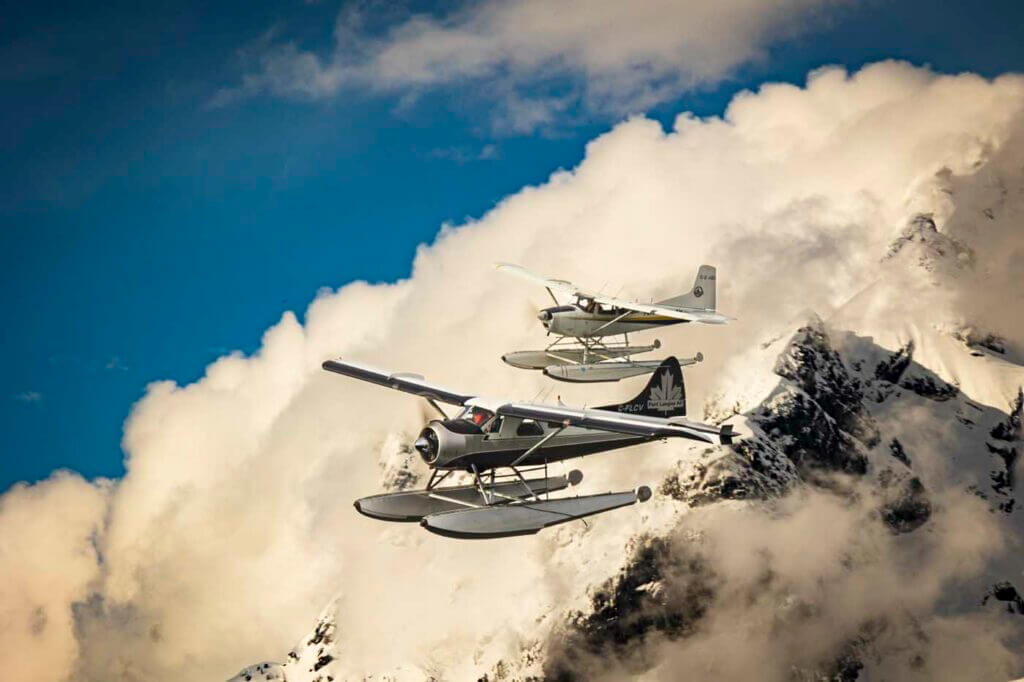
This past spring, we traveled to Pitt Meadows, B.C., to experience the magic of float flying in the Coast Mountains with Fort Langley Air, one of Canada’s oldest float operators. Join us as we learn to fly floatplanes amongst some of Canada’s most beautiful landscapes.
Serene tidal rivers, glacial lakes, snow-covered mountains, and rushing waterfalls; this story has it all. I’m on my second cold brew as I sit in a cafe, trying to articulate my experience flying with Fort Langley Air. For the first little while, the only words I have typed on my screen are “absolute freedom.”
As a commercially rated pilot with eight years of experience, flying floats in British Columbia has long been on my aviation bucket list. Although I anticipated the beautiful scenery and the excitement of landing on water, I never expected how this experience would make me feel. In those moments flying alongside sheer cliff faces into remote mountain valleys and landing on aquamarine lakes, I felt more alive than ever. It was a shock to the system, a jolt of electricity that shot up from my toes and into my hands that rested on the control column and throttle. This would certainly be an adventure of a lifetime.
A Tale of Two Companies
Nestled on the southern shores of the mighty Fraser River, just a stone’s throw away from the hamlet of Fort Langley, B.C., you’ll find Pitt Meadows Airport — a Canadian aviation landmark. Resting in the shadow of the Golden Ears, the airport is perfectly positioned between the Strait of Georgia and the Coast Mountains, offering pilots the ideal access point to the ocean or the mountains — wherever the adventure leads them next.
Pitt Meadows Airport owes much of its success to Art Seller, a Canadian fighter pilot who flew Spitfires during the Second World War. After surviving as a prisoner of war in Eastern Germany, Seller returned home to lay the foundation for Skyway Air Services. Pitt Meadows Airport was just a grass strip when Skyway began operations in 1947, but it would soon become home to Canada’s largest flight training unit. The company grew quickly, and what started with flight training, banner towing, and charter services expanded to crop spraying and water bombing. The company would eventually split into two separate entities and set the stage for modern-day Conair, internationally renowned for its firefighting capabilities, and Fort Langley Air, a modern float charter and training operation.
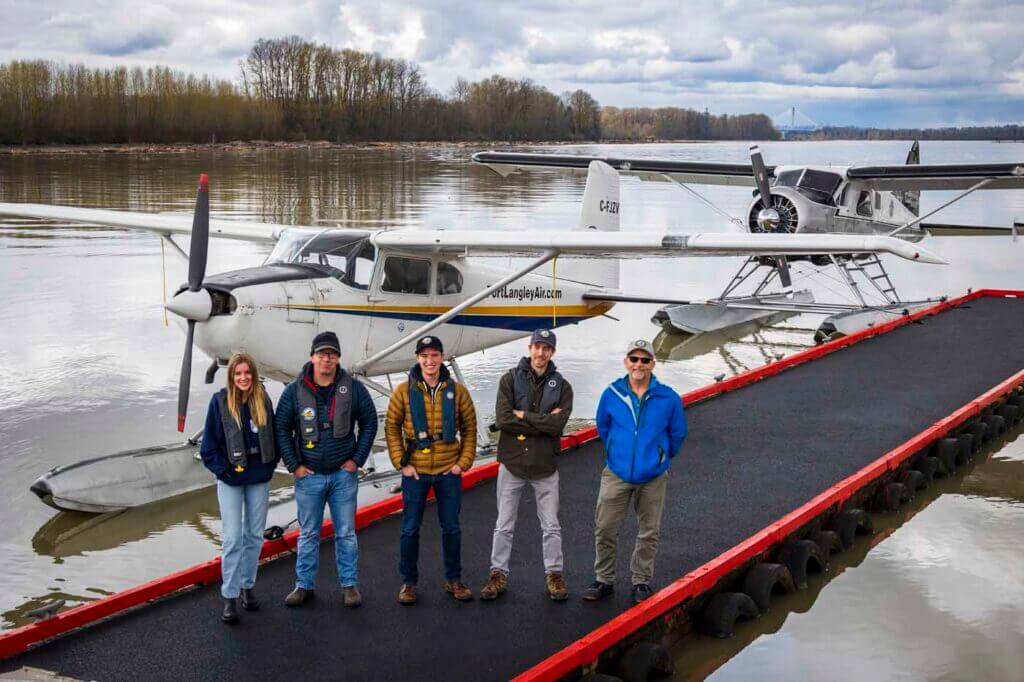
Skyway Air Services changed its name to Fort Langley Air in the ‘80s, and over the last four decades the operation has grown to include private charter and sightseeing flights, while sticking to its roots and continuing to offer float ratings and bush pilot courses. The company’s fleet includes a De Havilland Beaver and two Cessna 180s, with a third coming later this year.
In the last five years, Pitt Meadows Airport has undergone major development to its facilities, including adding a beautiful new terminal and a much-improved dock for float operations.
‘It’s Not Just a Rating’
At Fort Langley Air, you walk away with more than a float rating; its courses are designed to expose students to real-life challenges in a safe environment. Operations manager and chief pilot Andy Blacker has been flying floats for over a decade, but his military background gives him a unique and valuable perspective.
“It’s our goal to make it a fun, interesting, adventurous experience,” he said. “It’s not just a rating. In our courses, students get exposure to low-level flying and marginal weather, it’s the safe exposure to a perceived risky situation, and that experience is invaluable for pilots.”
Half the fun in training there is being amongst some of the most beautiful landscapes in the country. (If you’re going through the trouble of avoiding terrain, you might as well enjoy being amongst it.) During training flights, Fort Langley Air makes it a priority to take students to nearby beaches, waterfalls and, in some cases, have lunch by a campfire in a remote area.
“It’s important to have fun and go places you would never have seen or flown into,” Blacker told Skies. “It’s about experiencing what it’s like to be a floatplane pilot.”
Today, Fort Langley Air has three float training offerings: a basic seven-hour float rating, a 15-hour seaplane course, and a 50-hour career bush pilot course. The 15-hour seaplane course is designed for the private pilot to operate their own aircraft in a bush environment. They begin with a rating and get exposed to more advanced terrain like mountain lakes, and face tricky weather conditions.
The 50-hour course is designed for the commercial pilot to enter the bush flying industry, giving them tangible experience that they can apply to their future career. This is an intensive program that includes 25 hours dual and solo, as well as a ground school.
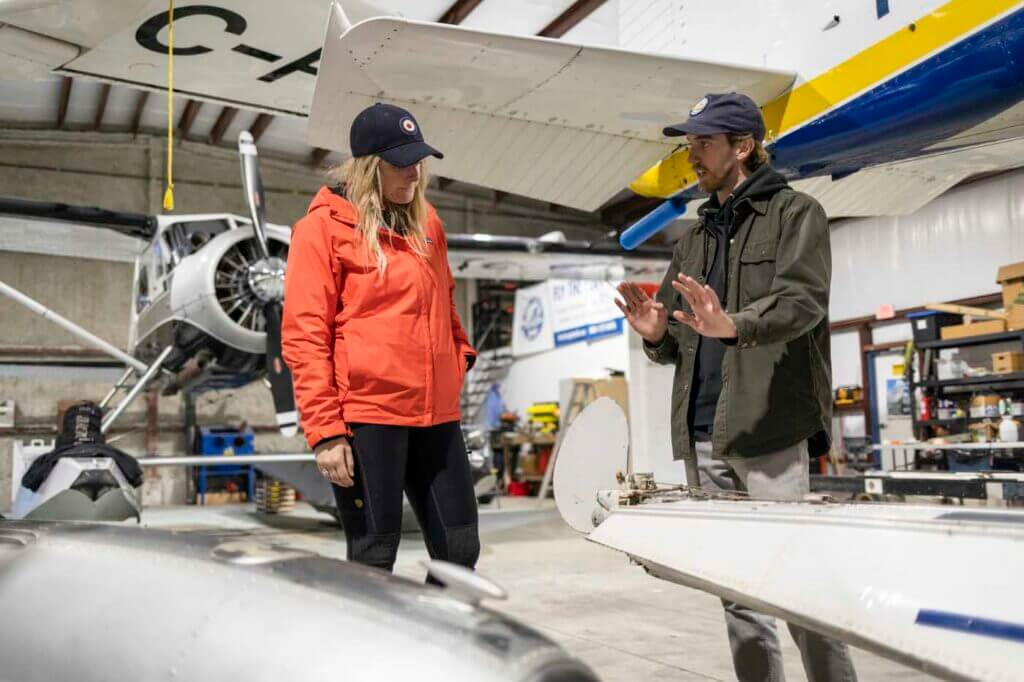
“It’s a very diverse course that takes you to a lot of different places, like flying off rivers, high-altitude lakes, and the ocean. It’s a big adventure!” said instructor Ruby Chorel, an alumna of the 50-hour bush pilot course. “The flying was so valuable for me because it teaches you skills that you can apply to the rest of your flying.”
At the time of this interview, Chorel was starting her first season working at Fort Langley Air.
“I fell in love with it, and I couldn’t stop,” she shared.
Last, but certainly not least, is the seven-hour float rating, which I had the privilege of completing during my time in Pitt Meadows.
S.C.A.M.P.F.R.S.
When I arrived at Fort Langley Air on my first day, I didn’t have much hope of going flying. The spring weather in southern B.C. was everything you would expect it to be, with low ceilings and high winds pushing in from the Pacific. I clambered through the front door with all my camera gear and was met by Blacker and flight Instructor Tegan Owens. Normally, when I arrive at a flight school at 8 a.m., I expect monotone, coffee-sipping instructors with about as much enthusiasm as a 152 starting on a winter’s day. But this time was different. Blacker and Owens were upbeat, friendly, eager and, to my surprise, gearing up to go flying.
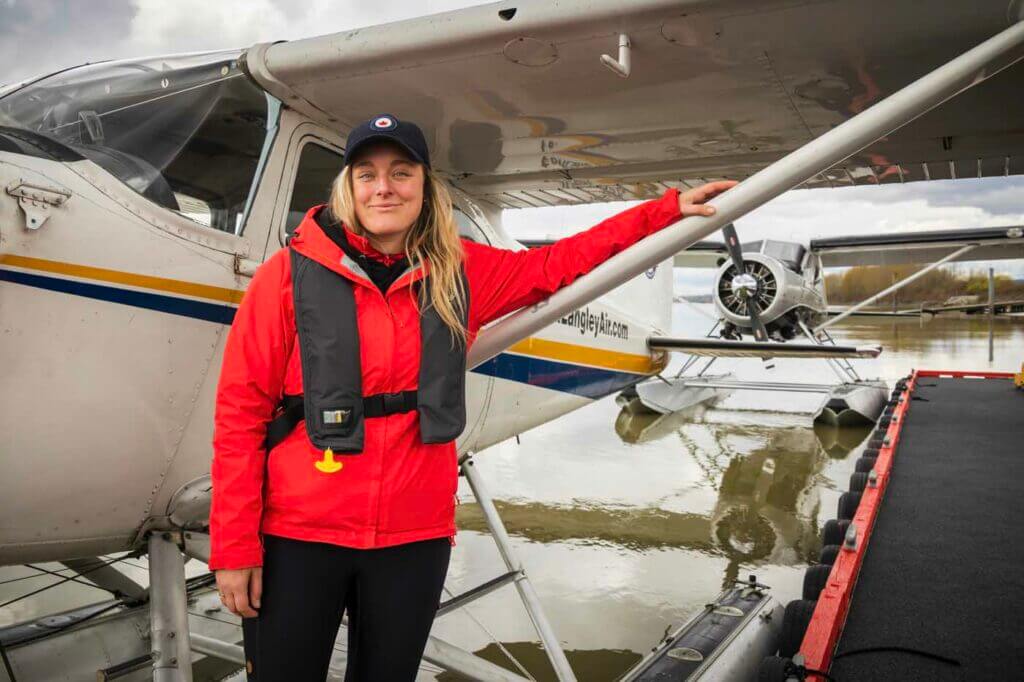
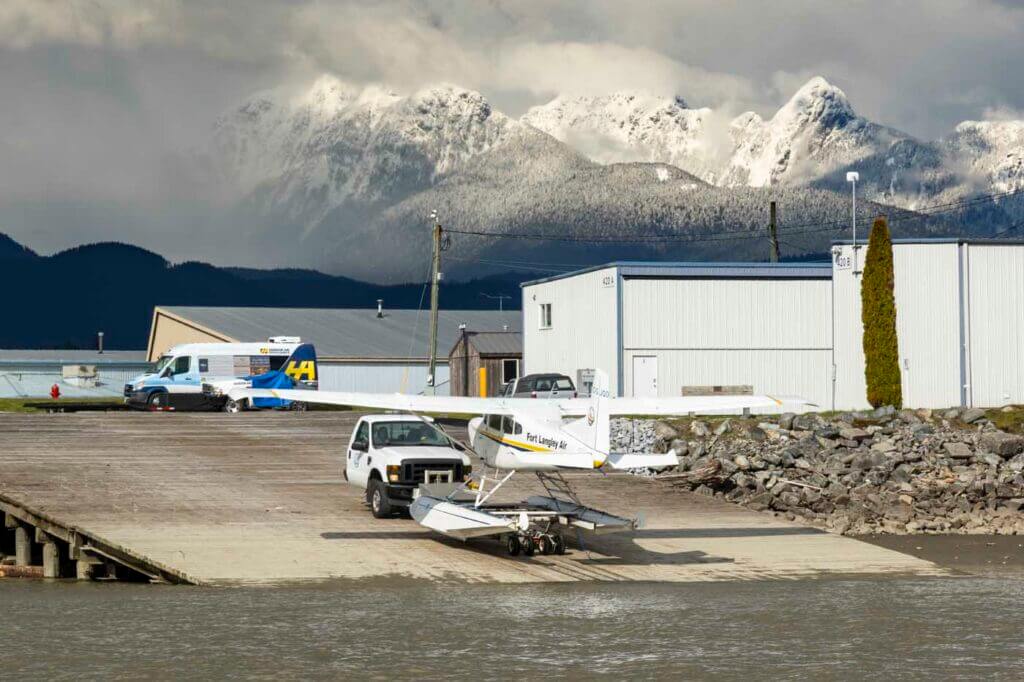

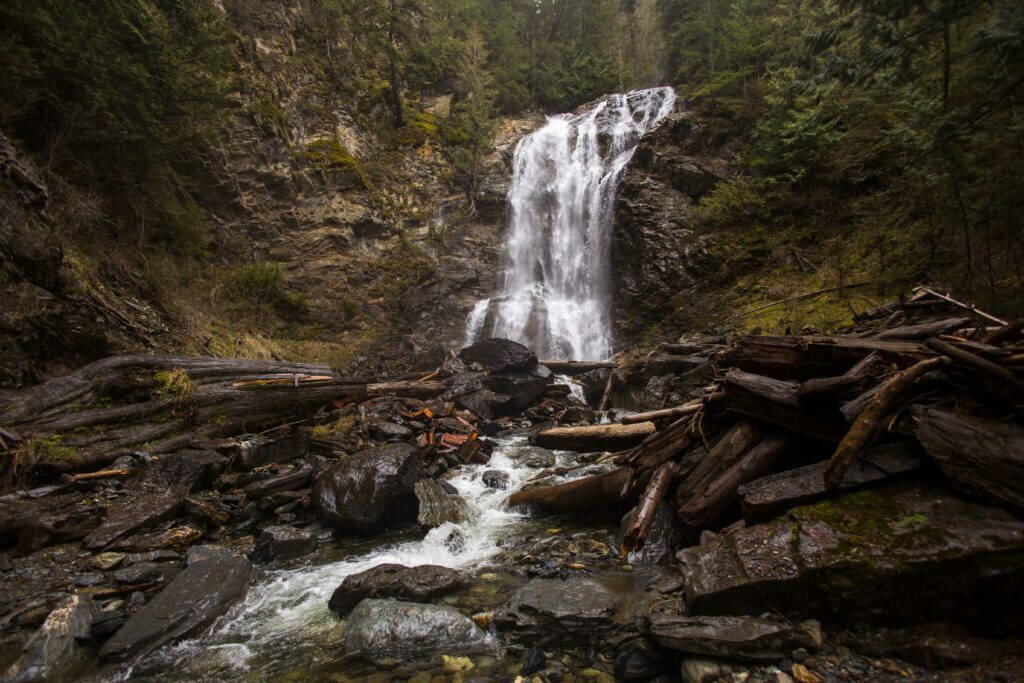
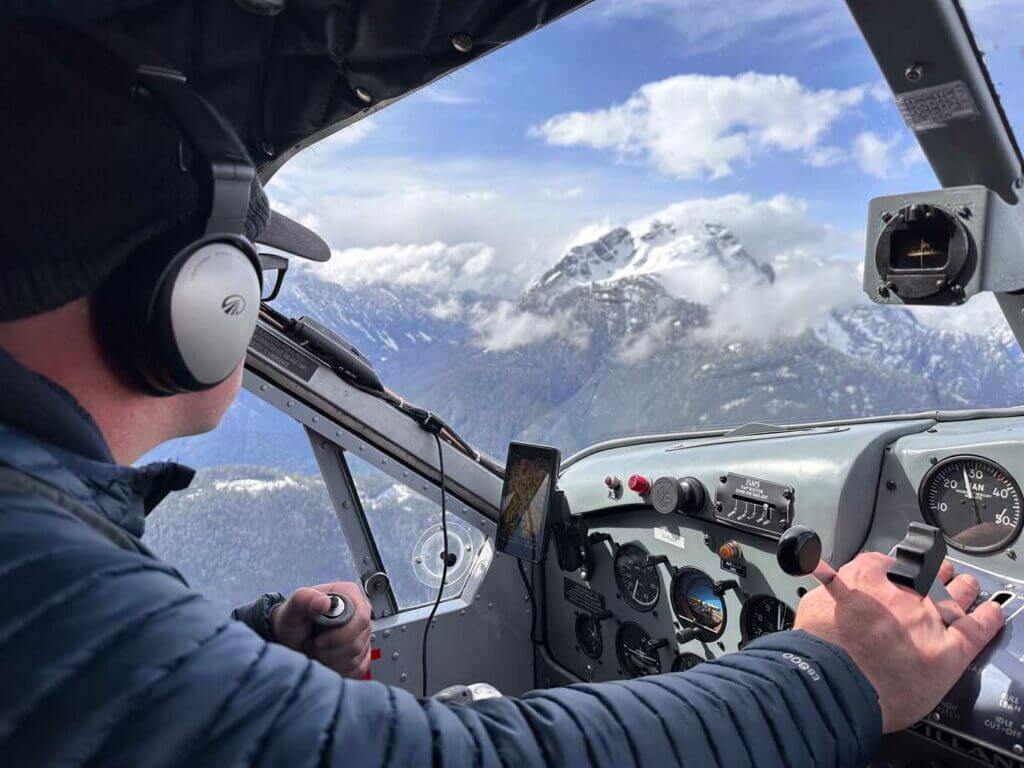
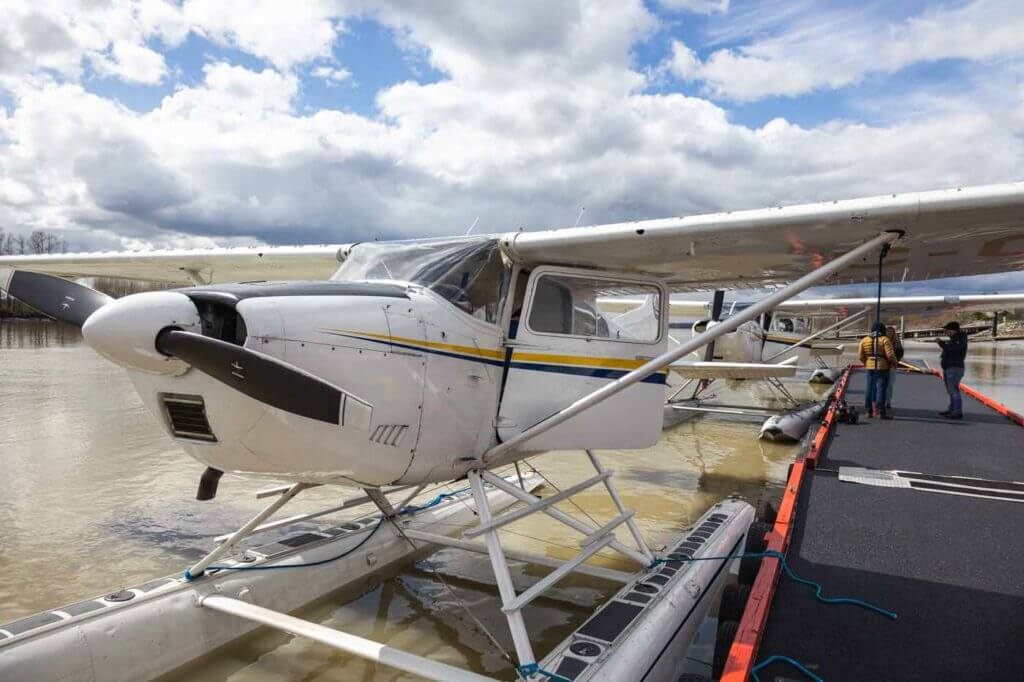
Before departing, Owens and I sat down to brief our flight and talk about what we would be experiencing out there.
“The biggest difference about float flying is that you’re never landing on the same runway,” she explained. “There’s debris, wind, tides, waves, all kinds of things that can happen as the environment changes.”
In my opinion, the hardest part is being able to survey both the conditions and the best actions to take when on approach to land.
We sat down and reviewed the skills required to complete a basic float rating. Step taxi, skipping stones, docking, beaching, flap-pops, glassy-water landings, and sailing — I was going to learn to do it all.
One of the final things we reviewed before departing was known as “S.C.A.M.P.F.R.S.,” a handy acronym to help the pilot ensure they have everything in order before takeoff and landing. It stands for: Switches, Carb heat, Area, Mixture, Prop, Flaps, Rudder, and Stick. This checklist tool was essential to our training and set the foundation for aircraft operation.
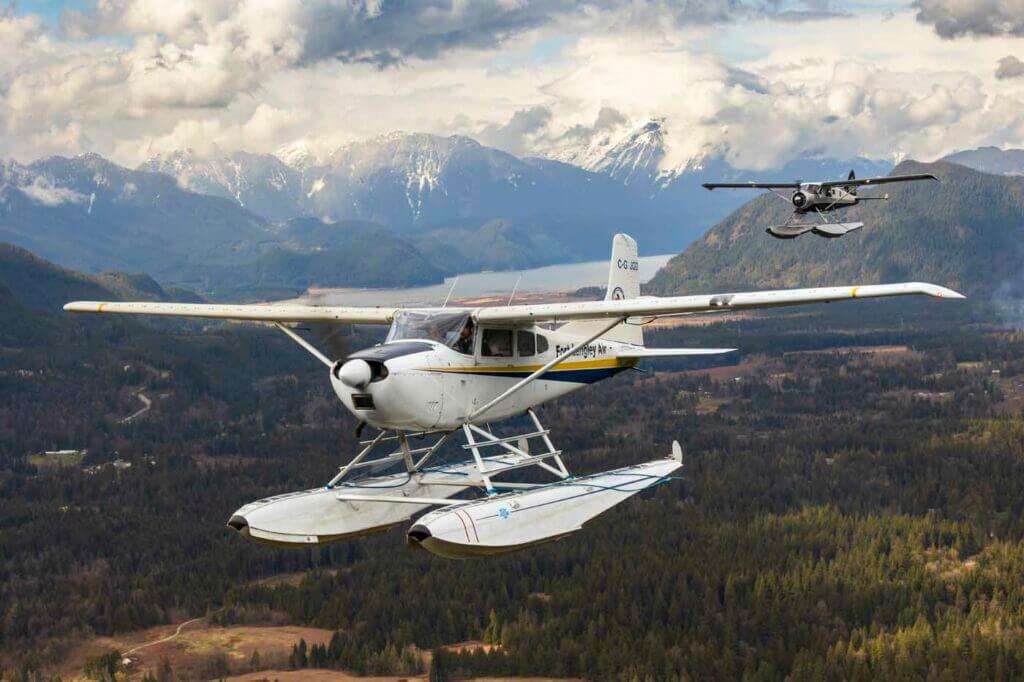
On the Slide
Owens and I left the classroom and made our way down to the water. The river current was more powerful than I anticipated, and I was surprised to see hundreds of log booms tied to the shores of the Fraser. Boat traffic made its way up and down as airplanes flew low overhead to land on the pavement at Pitt Meadows Airport. The waterway is located in Pitt Meadows’ busy Class C airspace, where incoming and departing traffic on Runway 18/36 flies low over the river.
As we dropped into the water in the Cessna 180, I couldn’t help but think back to something Blacker had said: “The biggest challenge in float flying is the water itself. We are on the Fraser River, a tidal river, so you have to consider that on top of the fact that you’re doing your run-up on a moving waterway.”
With so many changing variables, spatial awareness becomes an integral and potentially life-saving skill.
We called into Pitt Meadows tower and said, “Floatplane on the slide for an eastern departure.” I couldn’t help but wonder what “on the slide” meant, but quickly learned it was a West Coast term used to indicate an aircraft’s presence on an active waterway.
After going through our run-up, I pulled up the water rudder and applied full throttle on my first ever floatplane takeoff. The 180’s floats cut through the water and as we gained speed, I felt less and less resistance. Before long, we were in the air and on our way to Pitt Lake — where I would learn to land the thing!
Terrain, Terrain, Pull-up, Pull-up
As we flew deeper into the Coast Mountains, it felt as though we would be swallowed up by them. We were merely a pesky mosquito buzzing by their rocky cliff faces. The conversations we had back at the hangar became more and more present in my mind after each landing — this was no joke. We were very much alone, in the elements, and the consequences of a miscalculation or poor judgement loomed over me.
“Flying in B.C. can be a challenge,” noted Blacker, “certainly on floats. A good amount of respect for the weather is paramount for safety, but it’s also a great opportunity to fly amongst some of the most beautiful places that exist. It’s straight out of a picture book.”
In my eyes, the risk was worth the reward. With every new skill that Owens taught me during training, I felt those potential consequences drift further back in my mind.
Freedom is undoubtedly what draws pilots to float flying.
“It’s a good challenge as a pilot in that you’re no longer in controlled airspace,” said Blacker. “The challenge of making a decision to land or not land on a lake is yours.”
And just like that, I was hooked.
Jesus, Take the Wheel
After six hours of flight training in the 180, I was ready to fly solo. We landed on a quiet bay up Indian Arm, just east of Croker Island, before I received explicit instructions: don’t forget your water rudder; don’t taxi into the dock; and, lastly, be sure to pick up your instructor after completing five takeoffs and landings.
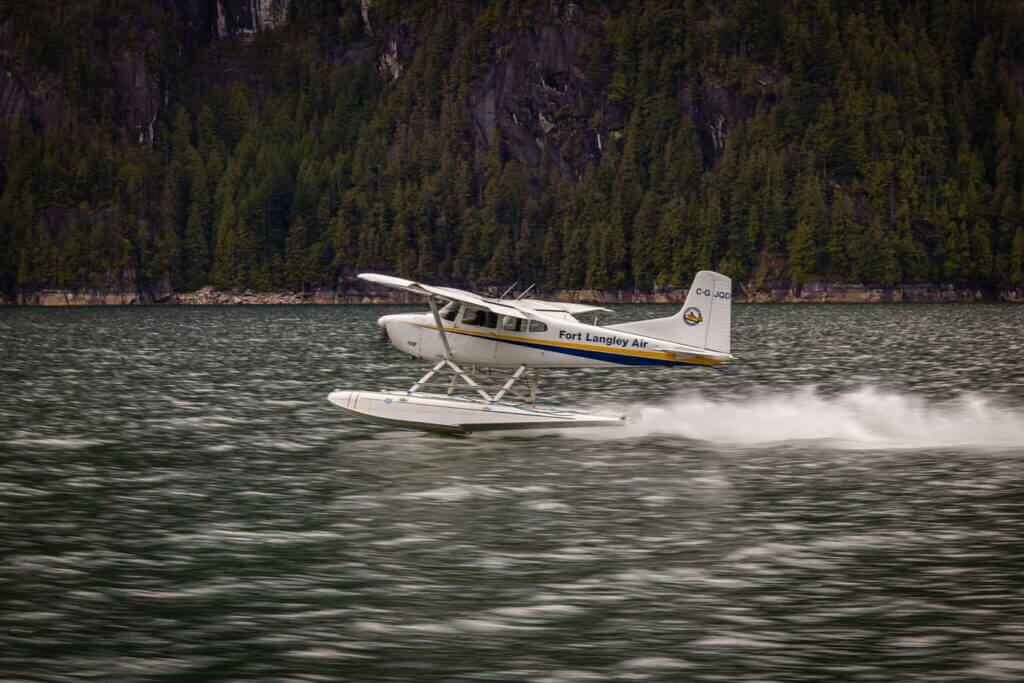
My instructor waved me off as my clammy palms gripped the control column; I had flashbacks to my first time driving a car without my parents. It was both exhilarating and terrifying. I said a quick prayer and applied full throttle.
The bay was narrow, and the terrain was steep, with jagged rocks and trees protruding from the cliff faces. I made my way around Croker Island with a base-to-final turn. Everything happened quickly and as I continued the turn, I dropped my flaps and eased back on the throttle. I continued to reduce my power setting, slowly starting to lift the nose up as I got closer to the water. Inching lower, with eyes focused and heart pounding, I finally started to feel the friction of the floats hitting the wavy inlet. The water settled around the floats and the aircraft quickly decelerated — I did it! Now, all I needed was four more successful landings.
Numbers two, three, and four went well. I applied the same formula each time, settling in on the water. (The airplane let me know when I was applying too much back or forward pressure.) Things certainly got more challenging after my third takeoff, however. The sky turned dark, and rain droplets started to appear on my windscreen. The change in lighting, combined with the rain, greatly impacted my depth of field; suddenly, I couldn’t tell how far the steep terrain and trees were from me.
I made my circuit tighter, and on my fifth approach to land, I had forgotten how many landings I already completed. Not wanting to risk only completing four landings — insufficient for the rating — I applied full throttle and launched into the air for one last circuit. To my instructor’s dismay, the rain started to come down even harder, and when I finally returned to the dock, they were soaked.
A Float Pilot is Born
I walked away from Fort Langley Air with a basic float rating and the understanding that despite the invaluable skills I learned, I still have a long way to go on my float flying journey. Learning to read the water and wind comes with time; before I can believe I even vaguely know what I’m doing, I need more guidance from the company’s experienced team.
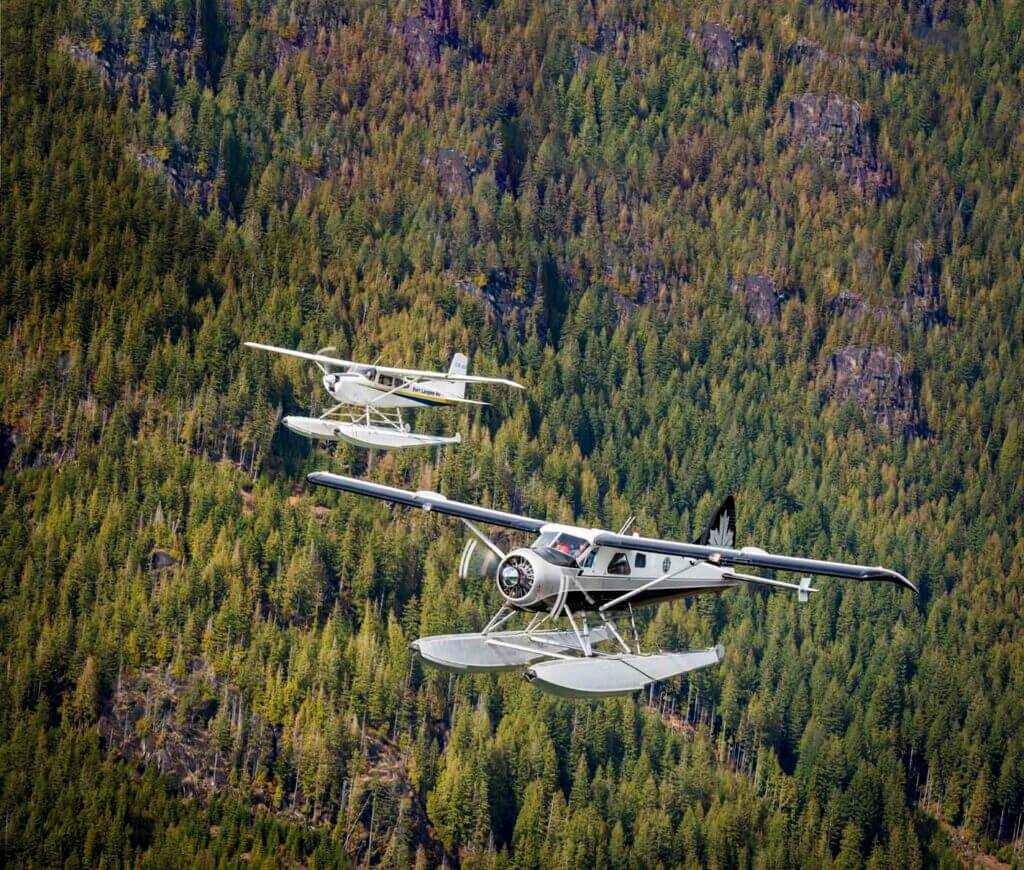
I would go as far as to say that if you are already going through the effort of getting your basic float rating, you might as well sign up for the 15-hour seaplane course. The seven-hour rating makes you familiar and competent with the basics, but the 15-hour course will give you confidence in the skills you’ve learned.
The Future of Fort Langley Air
A few years ago, a local family, the Porters, purchased Fort Langley Air. You may be familiar with the name, as the family amassed a large social media following when pilot Ian Porter, his wife, Michelle, and their three children, Samantha, Sydney, and Christopher, flew their Gippsaero GA8 AirVan from B.C. to the southern tip of Chile in support of SOS Children’s Villages. The family is affectionately known as “5 in the Sky.”
Aviation has been a long-time passion for Ian, so he was excited for the opportunity to become a part of Fort Langley Air’s deep aviation history.
“We wanted to get involved with Fort Langley Air as it has a decades-long history of training thousands of floatplane pilots on the West Coast,” shared Ian. “Being a part of something with such a rich history and flying seaplanes in one of the most beautiful locations in the world sometimes feels too good to be true.
“My two daughters are now licensed pilots, and my son is taking flying lessons,” he continued, “so the hope is that it becomes a fun family business for many more decades.”
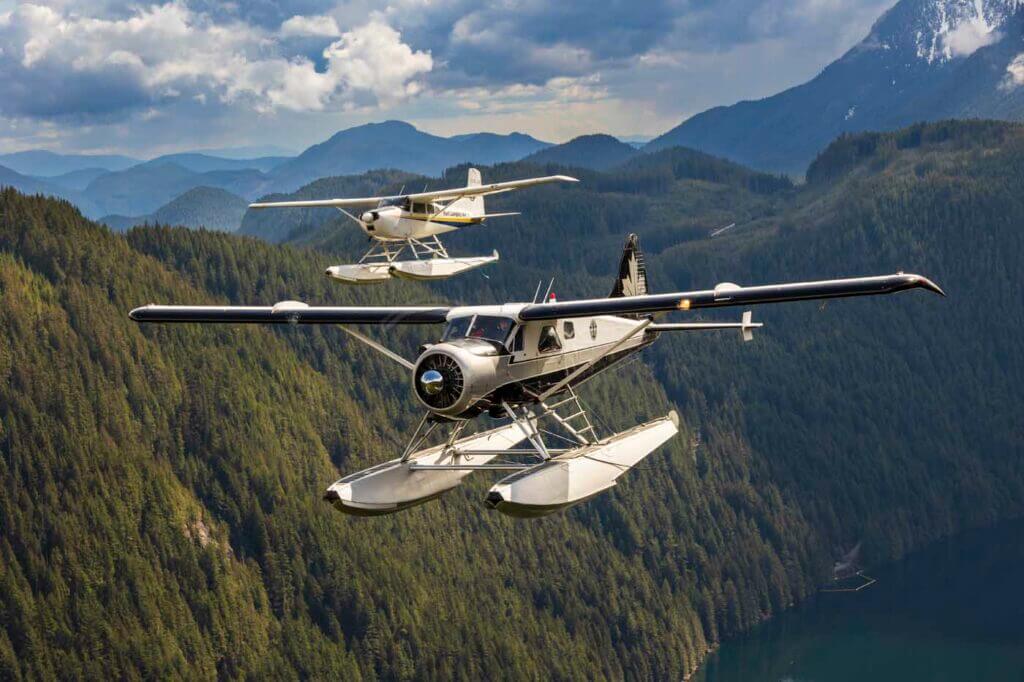
With such a passionate aviation family at the helm, and experienced staff behind the scenes, the sky is the limit for Fort Langley Air. In the near future, the business plans to expand its charter and sightseeing tours, and we are excited to see everything unfold.
Thanks to Fort Langley Air and its team for hosting Skies magazine and allowing us to take our readers on this incredible adventure. Blue skies and tailwinds.
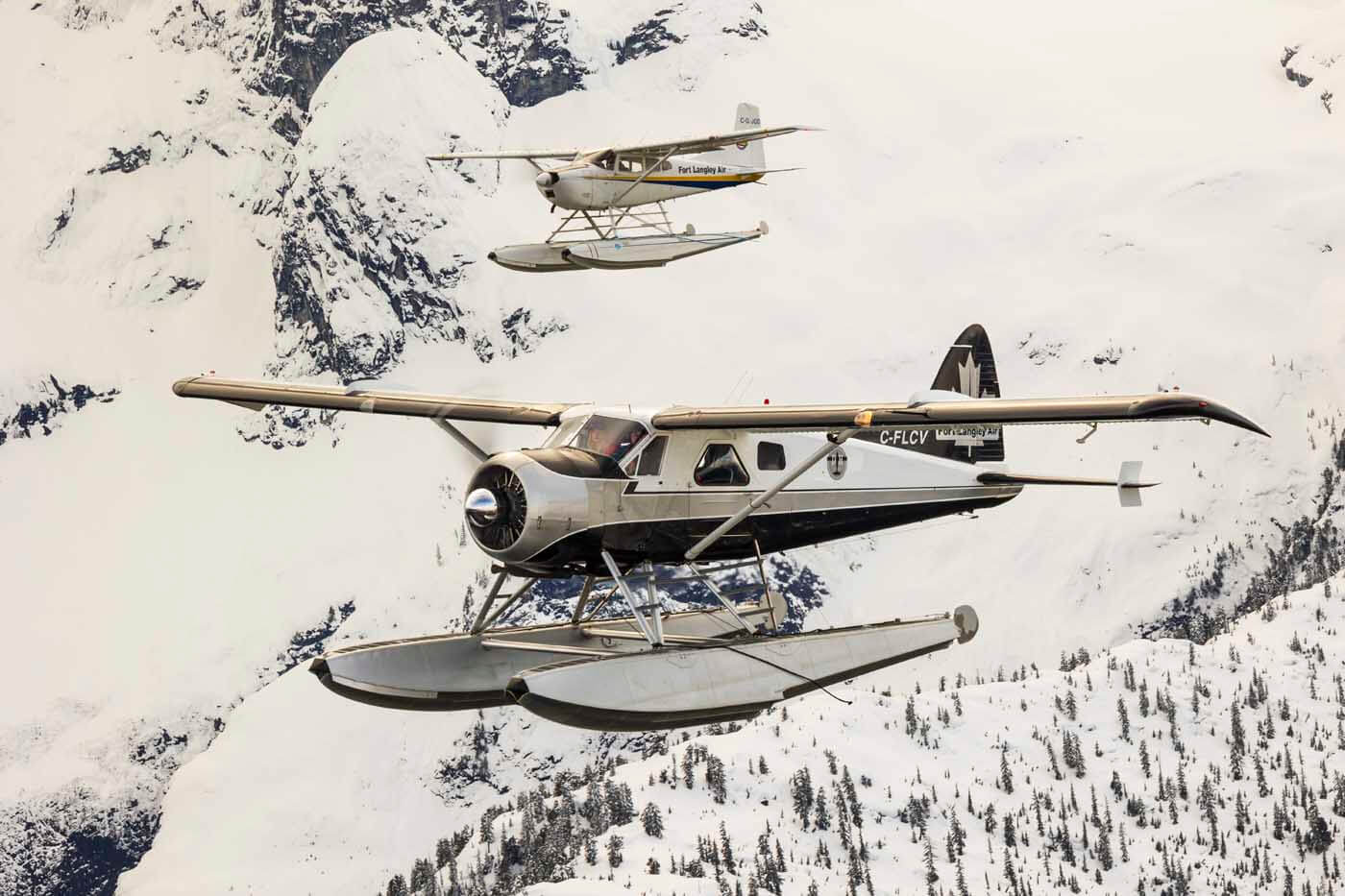

Did my float endorsement there a hundred years ago on a Super Cub,, great course, wonderful experience